Top Strategies to Prevent and Treat Razor Burn Effectively
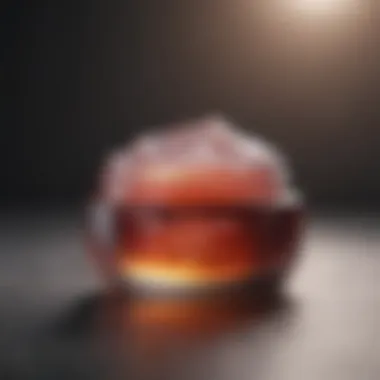
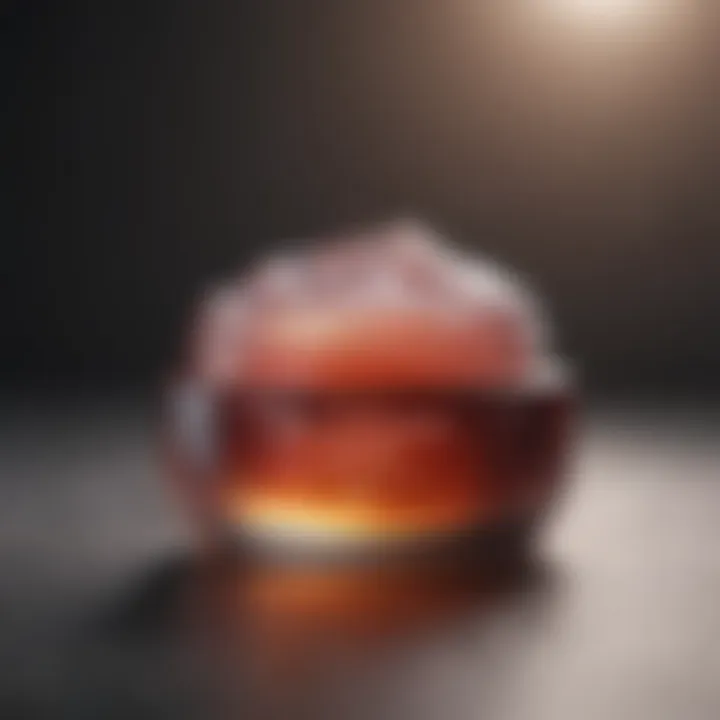
Intro
Razor burn is a significant concern for many people after they shave. This condition can lead to redness, irritation, and discomfort, affecting both men and women. Understanding how to prevent and treat razor burn is essential for maintaining healthy skin. The following sections will explore effective strategies that can significantly reduce the chances of experiencing razor burn.
By examining appropriate shaving techniques, post-shave skincare routines, and the use of beneficial products, this article aims to provide a thorough understanding of how to deal with razor burn both effectively and wisely.
Beauty Tips and Tricks
Skincare Routine Tips
The foundation of preventing razor burn begins with a solid skincare routine. Start by hydrating your skin daily; this choice enhances skin elasticity and minimizes irritation. Using products with soothing ingredients, such as aloe vera or chamomile, can also be quite helpful.
Before shaving, exfoliating the skin removes dead cells and reduces the likelihood of ingrown hairs, which can contribute to razor burn. Consider using gentle exfoliants, specifically designed for the face or body, depending on the area being shaved. Moreover, a pre-shave oil can act as a protective barrier, allowing the razor to glide smoothly over the skin.
Haircare Hacks
Although haircare may not directly relate to razor burn, managing hair growth effectively is key. Keeping the hair trimmed and prepped for shaving reduces the degree of irritation afterward. Use sharp and clean razors to ensure that each pass is effective, which minimizes tugging and pulling on the hair and skin.
Makeup Application Techniques
For those who wear makeup, the post-shave period requires particular care. Allow your skin to recover properly before applying makeup. Avoid heavy foundations or powders immediately after shaving, as they can exacerbate irritation. If you must apply makeup, opt for lightweight formulations that allow the skin to breathe.
Product Reviews
Skincare Product Reviews
Investing in effective post-shave products can significantly improve your experience. Nivea Men Sensitive Post Shave Balm is well-regarded for its soothing properties. It contains chamomile and vitamin E, which help calm irritated skin.
Additionally, CeraVe Moisturizing Cream is a top-rated option for ensuring skin hydration, preventing dryness and irritation.
Haircare Product Reviews
For those dealing with sensitive areas, consider using Gillette Fusion ProGlide Razor. Its design minimizes irritation while offering a close shave, reducing the risk of razor burn.
Makeup Product Reviews
Post-shave, a product like MAC Fix+ Setting Spray is ideal for refreshing the face without causing further irritation. It hydrates while creating a protective layer for the skin.
Expert Beauty Advice
Professional Makeup Artist Insights
Makeup artists often emphasize the importance of hydration before makeup application. Always follow a thorough skincare regimen to ensure you have a clean and healthy base.
Skincare Specialist Recommendations
Visiting a dermatologist can provide customized solutions for dealing with razor burn. They may recommend specific treatments based on your skin type and specific concerns.
Hair Stylist Tips
As for hair care near sensitive skin areas, work closely with a stylist to maintain manageable hair lengths and sensitivities. Regular trims can help keep areas less prone to irritation.
Epilogue
Razor burn is a manageable condition with the right strategies. By combining effective skincare practices with appropriate shaving techniques, individuals can significantly reduce their discomfort post-shave. Awareness of products that can soothe and protect the skin will also contribute to a more pleasant grooming experience. Understanding these tips leads to improved skin health and comfort after shaving.
Understanding Razor Burn
Razor burn is a topic that deserves attention for its commonality and impact on skincare. Many individuals experience this irritation at some point in their lives, particularly after shaving. Understanding razor burn is crucial because it helps individuals identify the underlying cause of their discomfort and take the necessary steps to alleviate it. This section breaks down what razor burn is, its causes, and how to identify it. Gaining insight into these elements can ultimately lead to better skincare practices and a more comfortable shaving experience.
Definition of Razor Burn
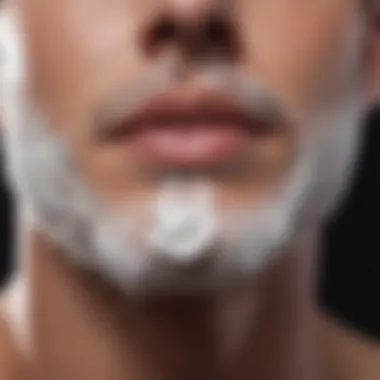
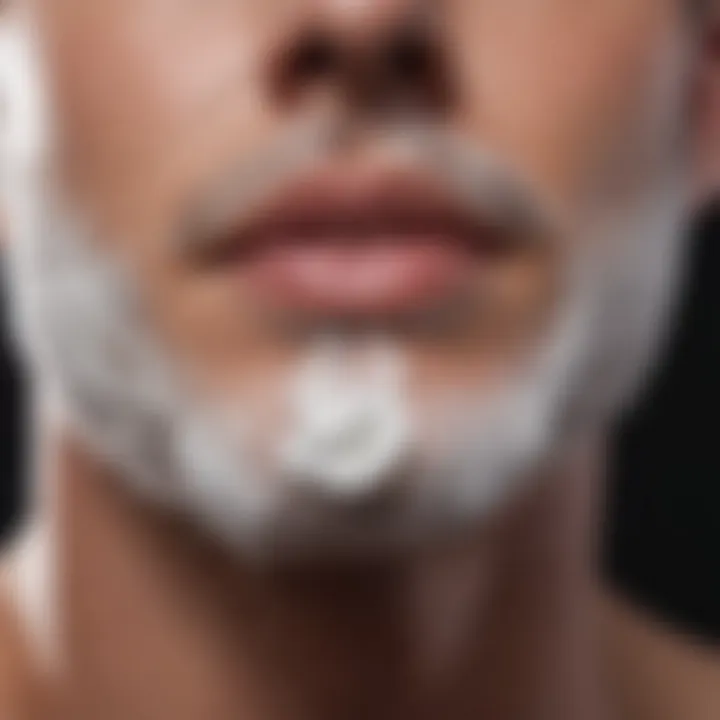
Razor burn refers to the irritation that occurs after shaving, often leading to redness, bumps, and discomfort on the skin. It can manifest in various ways, including red or inflamed patches and a burning sensation. This irritation may occur on any area of the body that has been shaved, but it's especially prevalent on sensitive regions like the neck and underarms. Knowing the definition is essential, as it allows individuals to differentiate between razor burn and other skin issues like ingrown hairs or allergies.
Common Causes
Many factors contribute to the development of razor burn. Some of the most common causes include:
- Dull Razors: Using a razor blade that is not sharp can lead to more friction and irritation on the skin.
- Improper Technique: If one does not use the right shaving angle or pressure, it can increase the likelihood of irritation.
- Lack of Moisturization: Failing to hydrate the skin adequately before and after shaving can exacerbate sensitivity.
- Skin Type: Individuals with sensitive skin are more prone to experiencing razor burn, as their skin reacts more harshly to the shaving process.
- Environmental Factors: Things like humidity and temperature can affect skin sensitivity and could contribute to razor burn.
Understanding these causes allows for implementing targeted preventative measures.
Identifying Razor Burn
Identifying razor burn involves recognizing its characteristic symptoms. Typically, the signs can be seen generally within a few hours after shaving. Look for symptoms such as:
- Redness: The skin appears inflamed and irritated.
- Bumps: Small, raised lesions may emerge, which can sometimes be mistaken for pimples.
- Burning Sensation: Individuals often report a sharp or stinging feeling on the affected area.
- Itching: As the irritation progresses, itchiness can become prevalent.
Recognizing these symptoms early can aid in taking appropriate action to soothe the skin and prevent further irritation.
"Understanding the causes and symptoms of razor burn is the first step toward effective management and prevention."
Preventative Measures
Razor burn, while commonly encountered, can largely be prevented through conscientious practices during the shaving process. Understanding the importance of preventative measures is essential in minimizing discomfort and skin irritation. These strategies not only help in achieving a smoother shave but also significantly reduce the likelihood of skin issues arising post-shave. In essence, preventative measures serve as the foundation for an effective shaving routine, creating an environment where skin can maintain its integrity and health.
Choosing the Right Razor
Selecting an appropriate razor is one of the foremost steps in preventing razor burn. The right choice varies based on personal skin type and hair characteristics. Generally, there are two main types of razors: cartridge razors and safety razors.
Cartridge razors are user-friendly and ideal for those with sensitive skin as they usually come with built-in lubricating strips. On the other hand, safety razors provide a closer shave and tend to irritate the skin less if used correctly.
Key considerations while choosing a razor include:
- Blade sharpness: Dull blades increase pulling and tugging, elevating the risk of irritation.
- Blade count: Fewer blades are generally gentler on the skin, whereas multi-blade options might increase comfort for some users.
- Grip and design: Ensure the razor fits comfortably in the hand for ease of maneuvering.
Optimal Shaving Techniques
Utilizing proper shaving techniques can greatly influence the presence of razor burn. Here are some techniques to adopt:
- Shave with the grain: Always follow the direction of hair growth. This reduces the likelihood of hair being pulled back and minimizes irritation.
- Apply even pressure: Applying too much pressure can lead to cuts and is not always necessary. A gentle touch often produces better results.
- Avoid multiple passes: Minimizing the number of passes over the same area can decrease irritation. If a closer shave is desired, ensure that adequate lubrication is present.
- Rinse the blade frequently: Clearing the blade of hair and shaving cream can prevent build-up and ensure the blade functions optimally.
Pre-Shave Preparation
Pre-shave preparation is equally crucial in the fight against razor burn. Skipping this step can lead to subpar results and increased skin irritation. Effective pre-shave steps include:
- Cleansing the skin: A gentle cleanse removes dirt and oils, preparing the skin for a more effective shave.
- Softening hair: Warm water or a hot towel can soften the hair and skin, making them more pliable. This aids in allowing the blade to glide smoothly across the skin.
- Using a pre-shave oil or cream: These products create a protective barrier between the blade and skin, reducing friction and the potential for irritation.
Proper pre-shave preparation can transform the shaving experience, leading to less irritation and smoother results.
In summary, preventative measures in shaving are crucial for reducing the risk of razor burn. By choosing the right razor, employing optimal shaving techniques, and adequately preparing the skin, one can significantly minimize discomfort and protect skin health.
Post-Shave Care
Post-shave care is an essential component of maintaining healthy skin and mitigating the effects of razor burn. Understanding how to properly care for your skin after shaving can significantly reduce discomfort, soothe irritation, and promote overall skin health. This section will details two crucial aspects of post-shave care: immediate aftercare and long-term skin care routines.
Immediate Aftercare
Immediate aftercare is vital right after you shave. Skin can become sensitive and irritated due to direct contact with the razor. To provide effective relief, consider the following steps:
- Rinse with Cold Water: After shaving, rinse your face with cold water. This helps to close the pores and reduce inflammation. It is an efficient first step to easing discomfort.
- Gentle Pat Dry: Use a clean towel and gently pat your face dry. Avoid rubbing, as this may exacerbate irritation and redness.
- Apply a Soothing Product: The application of a soothing product can provide immediate relief. Look for creams or gels that contain ingredients like aloe vera, chamomile, or calendula. These compounds are known for their calming properties.
- Avoid Alcohol-Based Products: Post-shave products often contain alcohol, which may further irritate freshly shaved skin. Opt for alcohol-free aftershaves or balms instead.
Take care of your skin after shaving; immediate aftercare can prevent long-lasting irritation.
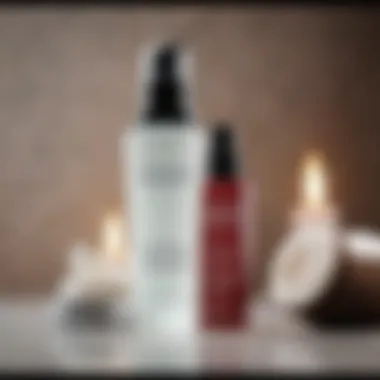
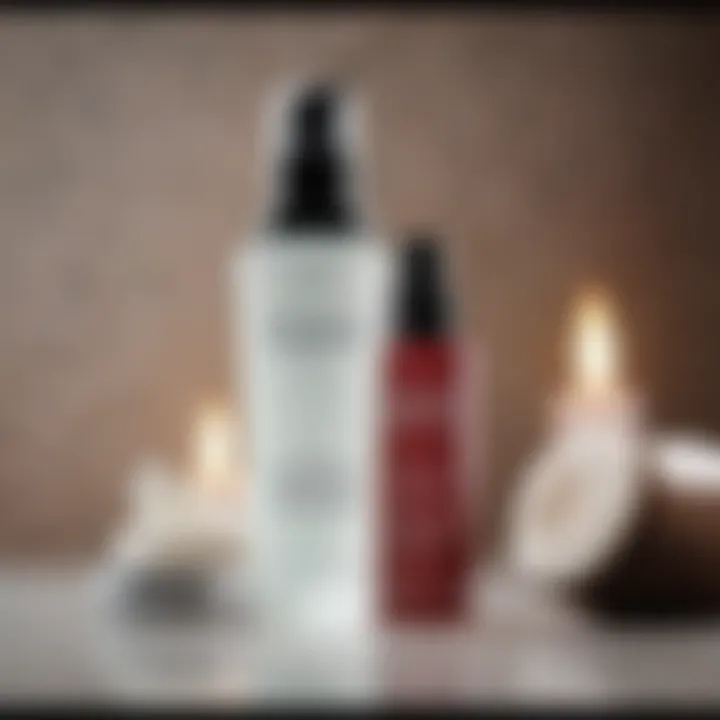
Long-Term Skin Care Routines
A long-term skin care routine can help maintain skin health and minimize the occurrence of razor burn over time. Here are essential elements to include in your daily and weekly regimen:
- Hydration: Keep your skin well-hydrated. Use a moisturizer daily that suits your skin type. Look for non-comedogenic formulas if you have oily skin. Regular hydration is key to maintaining skin elasticity and health.
- Exfoliation: Incorporate exfoliation into your routine once or twice a week. Exfoliating removes dead skin cells, preventing hair from getting trapped beneath the skin surface, which can lead to bumps and irritation. Use gentle exfoliants to avoid aggravating sensitive skin.
- Sunscreen: Protecting your skin from sun damage is crucial. Applying sunscreen daily can prevent uneven skin tone and premature aging. Look for a broad-spectrum sunscreen with at least SPF 30.
- Customizing Products: Because skins vary in type and sensitivity, consider tailoring your routine to fit your individual needs. Consult a dermatologist if necessary to understand what products will work best for your skin type.
In summary, post-shave care is more than just a few quick steps. It requires a mindful approach that promotes recovery and long-term health for your skin, ensuring you reduce the frequency and severity of razor burn.
Products for Razor Burn Relief
Razor burn is not merely an annoyance; it can lead to discomfort and irritation that lasts much longer than the shave itself. To combat this, various products exist that specifically target razor burn relief. These items not only soothe the skin but also help in the recovery process after shaving. It is vital to understand how these products function, what ingredients to look for, and their benefits. This knowledge is essential for anyone dealing with post-shaving irritation. The right products can make a significant difference, leading to smoother skin and a more comfortable experience.
Soothing Creams and Gels
Soothing creams and gels are among the most popular products for alleviating razor burn. They typically contain ingredients like aloe vera, chamomile, or calendula, known for their anti-inflammatory properties. These components work to calm irritated skin and speed up the healing process. When selecting a cream or gel, look for formulations that are alcohol-free, as alcohol can exacerbate dryness and irritation.
The application of these products should begin immediately after shaving. Simply apply a generous amount to the affected areas, allowing the soothing compounds to penetrate the skin. For optimal results, choose products with added moisturizers to maintain skin hydration.
Aftershave Balms
Aftershave balms serve a dual purpose. They not only provide relief from razor burn but also moisturize and protect the skin post-shave. Many balms include soothing agents, such as witch hazel, to reduce inflammation and redness. It's important to choose a balm that suits your skin type, especially if your skin tends to be sensitive.
Here are some benefits of using aftershave balms:
- Hydration: They help in retaining moisture, essential for preventing dryness.
- Cooling Effects: Many balms deliver a cooling sensation that instantly eases irritation.
- Protection: Creates a barrier on the skin that can prevent future irritation.
For application, use a small amount and gently massage it into the skin until fully absorbed. A well-chosen aftershave balm can transform a painful post-shave experience into a soothing one.
Natural Remedies
Natural remedies provide an alternative to commercial products for those seeking gentler options. Common natural ingredients can be very effective for razor burn relief. For instance:
- Aloe Vera: Known for its hydrating and healing properties, aloe vera can be applied directly to the skin.
- Cold Compress: Applying a cold compress can reduce inflammation and swelling.
- Honey: This natural antiseptic helps in soothing irritated skin and acts as a moisturizer.
To use these remedies, simply apply the selected natural product to the affected area as needed. While natural remedies may take a bit longer to show effect, their gentle nature can be very calming for the skin over time.
Utilizing the right products for razor burn relief is crucial. Selecting creams, gels, or natural treatments that suit your skin will lead to a more enjoyable shaving experience.
Home Remedies for Razor Burn
Home remedies can provide a valuable means of relief from razor burn, allowing individuals to address this common issue with natural solutions. Using ingredients that are often already found in one's home can lead to effective treatments without the need for costly products. These remedies tend to be gentle on the skin and can soothe irritation caused by shaving.
Aloe Vera Applications
Aloe vera is known for its soothing and healing properties. It contains vitamins, minerals, and fatty acids that help to alleviate irritation associated with razor burn. Applying fresh aloe vera gel directly to the affected area can promote healing. Here’s how to use it:
- Harvest the Gel: Slice open an aloe vera leaf and scoop out the clear gel inside.
- Apply: Gently spread the gel over the razor burn areas.
- Wait: Allow it to sit for about 20 minutes before rinsing with cool water to enhance its soothing effects.
Regular application can reduce redness and provide a cooling sensation, making it an ideal remedy for sensitive skin.
Cold Compress Methods
A cold compress can dramatically reduce inflammation and irritation. This method is simple but effective. Using a cold compress helps reduce redness and swelling, providing a quick relief to the skin after shaving. Here’s how to apply it:
- Prepare the Compress: Take a clean cloth or towel, dampen it with cold water or ice water, and wring it out.
- Apply: Place the cold compress on the razor-burned area for about 10 to 15 minutes.
- Reapply if Needed: You can repeat this process every few hours for best results.
The cold temperature helps constrict blood vessels, thus decreasing inflammation in the skin.
Honey as a Soothing Agent
Honey is more than just a natural sweetener; it's renowned for its antibacterial and anti-inflammatory properties. It can help heal the skin, making it a useful remedy for razor burn. Here's how to utilize honey:
- Apply Honey: Take a small amount of honey and gently rub it over the affected areas.
- Let it Sit: Allow it to remain on the skin for around 20 to 30 minutes.
- Rinse: Wash off with lukewarm water.
Honey not only soothes the immediate discomfort but also helps in repairing skin tissue, which can be beneficial if the razor burn has led to some damage.


Incorporating these home remedies into your routine can yield significant results in relieving and preventing razor burn. They provide a cost-effective alternative to store-bought products while minimizing the risk of irritation or adverse reactions.
When to Seek Professional Help
Seeking professional help can be the most prudent decision when dealing with razor burn, especially when discomfort persists or worsens. Recognizing when to consult a specialist can significantly impact recovery and long-term skin health.
Recognizing Severe Cases
Severe cases of razor burn can manifest in various forms. Watch for symptoms like extreme redness, swelling, blistering, or the arrival of pus-filled bumps. These may indicate an infection or a more severe reaction to shaving. If symptoms persist beyond a few days despite home remedies or over-the-counter treatments, it is wise to seek professional advice. Continuous irritation could lead to scarring if left untreated.
- Signs to monitor:
- Intense redness that does not subside
- Swelling that increases over time
- Development of blisters or pustules
- Persistent itching or burning sensation
Ignoring severe symptoms can lead to complications. It is better to err on the side of caution.
Consulting a Dermatologist
Consulting a dermatologist is advisable if one experiences frequent or severe razor burn. A dermatologist can provide a tailored diagnosis and recommend effective treatments, which may not be accessible through generic advice. During the consultation, be open about your shaving habits and the products used. This information helps the dermatologist understand potential irritants or allergens.
- Benefits of seeing a dermatologist:
- Professional evaluation of skin condition
- Prescription treatments for significant discomfort or infections
- Personalized skincare routine that minimizes razor burn incidence
- Insight into alternative hair removal methods suitable for sensitive skin
Long-Term Solutions to Razor Burn
Razor burn can be a persistent issue for many individuals, prompting the need for effective long-term solutions. This section discusses the significance of adopting strategies aimed at minimizing future occurrences of razor burn. By understanding alternative shaving methods and preparing for more permanent solutions like laser hair removal, individuals can achieve healthier skin and reduce discomfort associated with shaving.
Alt Shaving Methods
Exploring alternative shaving methods is crucial in the quest to alleviate razor burn. Traditional wet shaving with a blade might not suit everyone's skin type or hair texture. Some individuals may find that using a straight razor or safety razor significantly lessens irritation. These tools often provide a closer shave with reduced skin contact, which can lower the risk of razor burn.
Additionally, electric razors present a different option. They tend to glide over the skin more smoothly and do not require shaving cream, which can also be irritating for sensitive skin. It is essential for each person to experiment with different tools and techniques to find what works best for their specific needs. Each method has its complications, so thorough research and perhaps consultation with a skincare specialist is always beneficial.
In some cases, individuals have opted for hair removal methods like depilatory creams or waxing, which can provide longer-lasting results. However, these come with their group of potential side effects, so one needs to weigh the risks carefully.
Preparing for Laser Hair Removal
Laser hair removal offers a more permanent solution to combatting razor burn. As this method involves the use of concentrated light to destroy hair follicles, it reduces the necessity for frequent shaving. Therefore, the likelihood of developing razor burn diminishes significantly. Before pursuing this treatment, it is important to prepare adequately.
Consulting with a certified dermatologist is always the first step. They can evaluate skin type and hair characteristics to ensure laser hair removal is a suitable option. A patch test may also be recommended to gauge skin reaction to the laser.
Once cleared for the procedure, following pre-treatment guidelines is vital. Avoiding sun exposure and harsh skincare treatments in the weeks leading up to the appointment is crucial for optimal results. Furthermore, understanding the possibility of several sessions may be required helps in setting realistic expectations for outcomes.
"Long-term solutions like laser hair removal not only alleviate existing razor burn but also help maintain smooth skin with minimal irritations."
Ultimately, investing time and resources into long-term strategies can greatly enhance skin health. Each individual's journey to choose the right method takes patience and exploration. By considering options like alternative shaving methods and preparing appropriately for laser hair removal, the discomfort related to razor burn can be significantly reduced, leading to an overall improvement in one's skincare routine.
End
In understanding how to effectively alleviate razor burn, it is crucial to summarize the best practices that contribute to an optimal shaving experience. This article emphasizes the multifaceted approach needed to tackle razor burn, from preparation before shaving to aftercare routines that enhance skin health.
Summary of Best Practices
Choosing the right tools: Use high-quality razors which suit your skin type, whether they are multi-blade or single-edge. An appropriate razor can significantly reduce irritation.
Implementing proper techniques: Techniques like shaving in the direction of hair growth and not applying excessive pressure help minimize skin damage. Incorporating a pre-shave oil can offer an additional layer of protection.
Post-shave care: Applying soothing creams or natural oils, such as Aloe Vera and coconut oil, can calm irritated skin effectively. Additionally, alcohol-free aftershave balms are preferable as they do not dry out the skin.
Encouragement for Individual Assessment
It is important for individuals to recognize that experiences with razor burn can vary significantly. Factors such as skin type, hair texture, and the products used all play a significant role. Everyone should assess their personal needs and adapt their shaving routines accordingly. Frequent monitoring of how the skin reacts to different products is recommended.
"Understanding your skin is the first step to effective treatment. Every face is unique, and so should be the approach."
By paying attention to your skin’s specific reactions and adjusting practices as necessary, one can achieve a comfortable and effective shaving experience. The key is to remain open to experimentation while being mindful of the skin’s signals.







